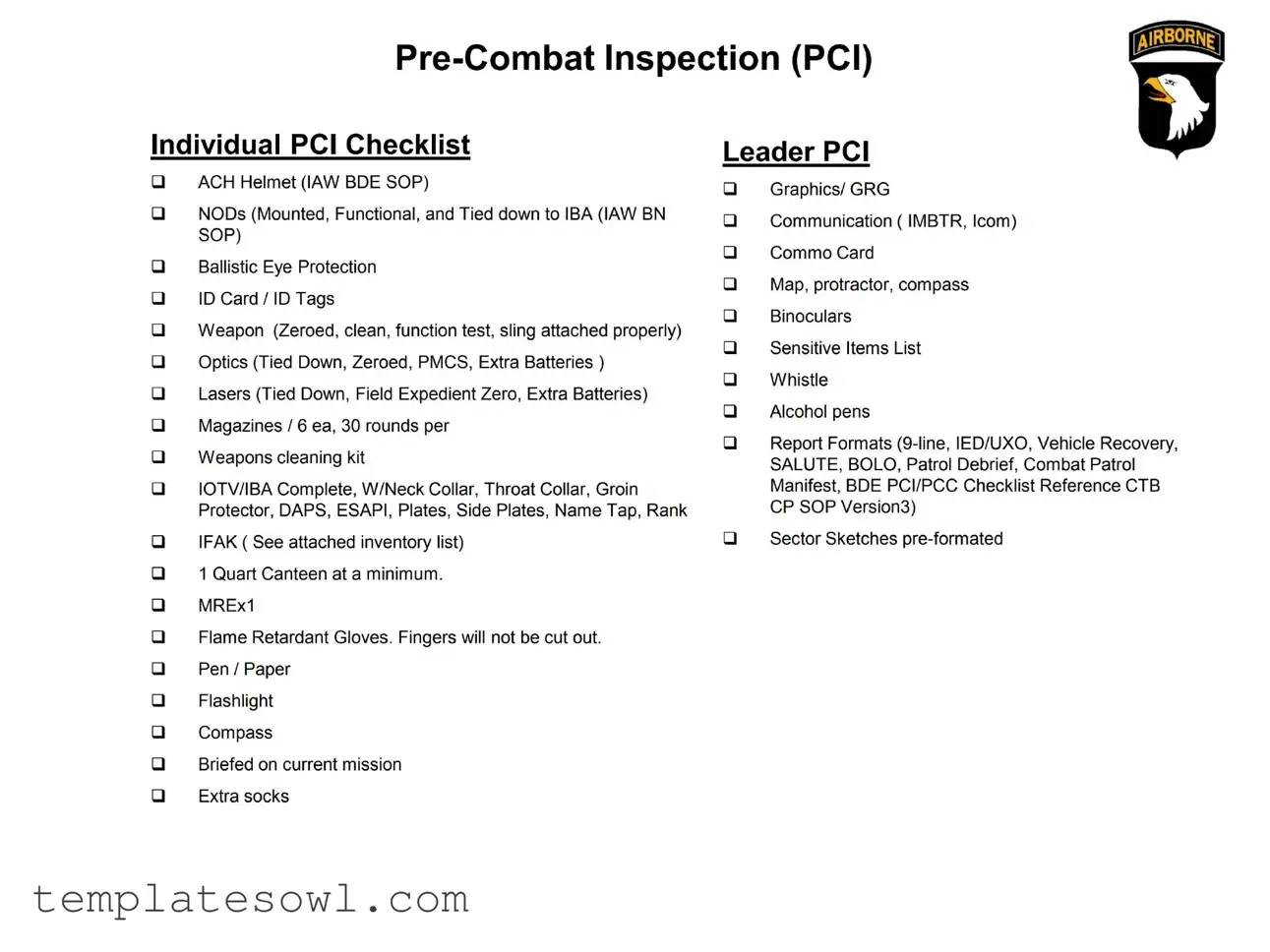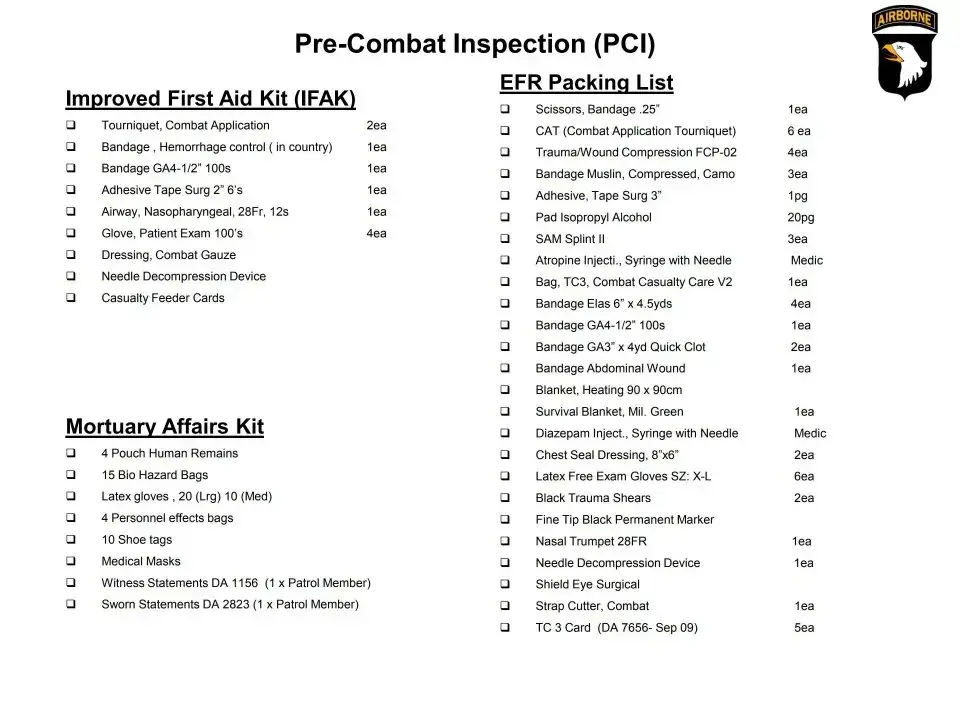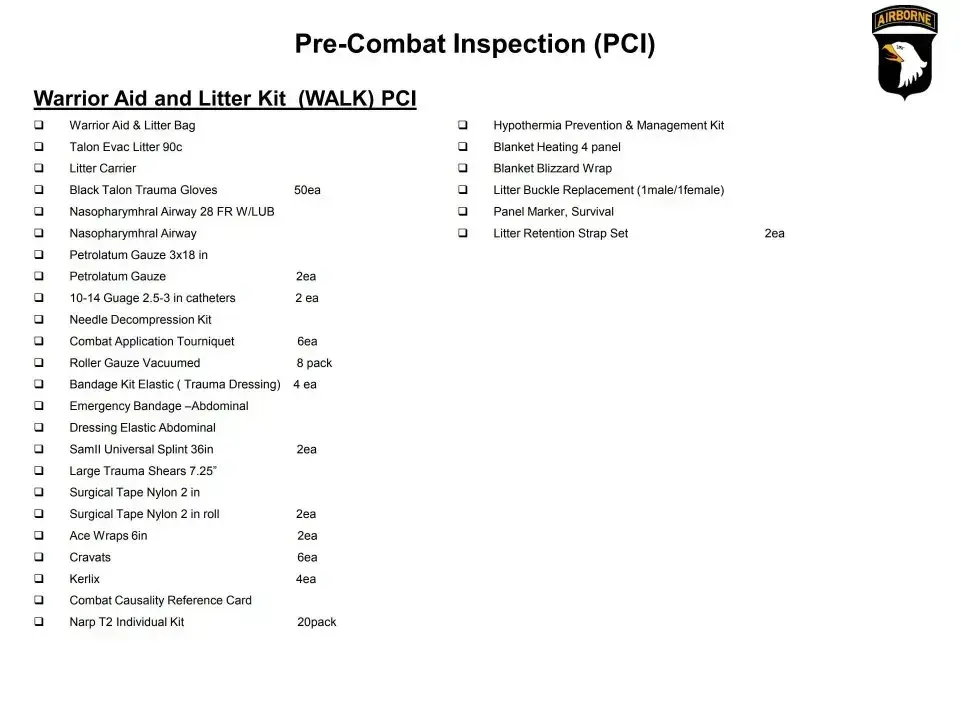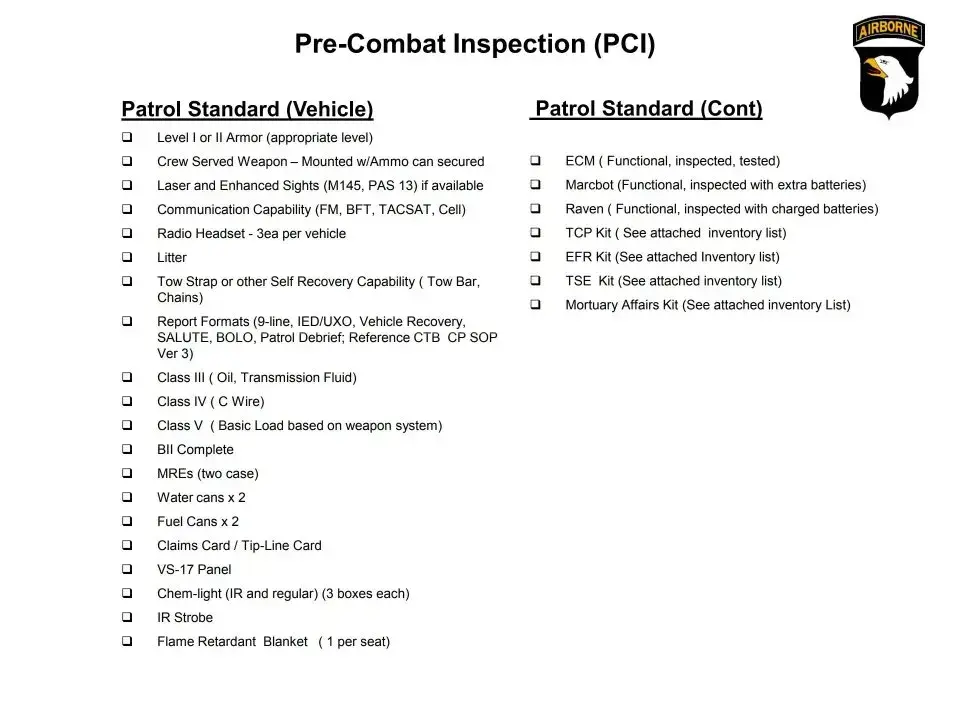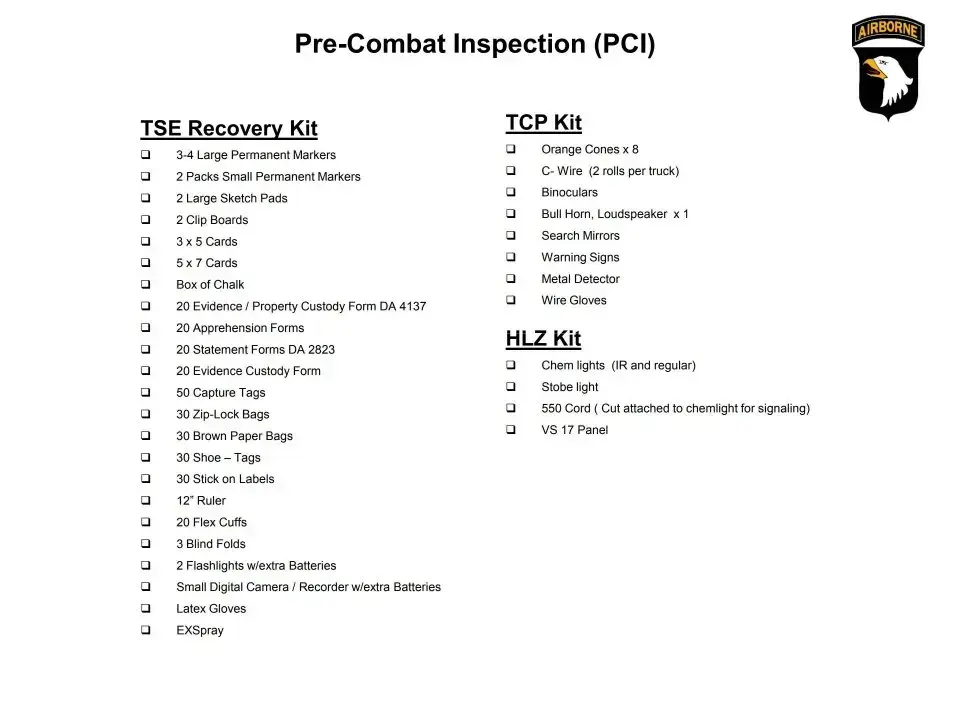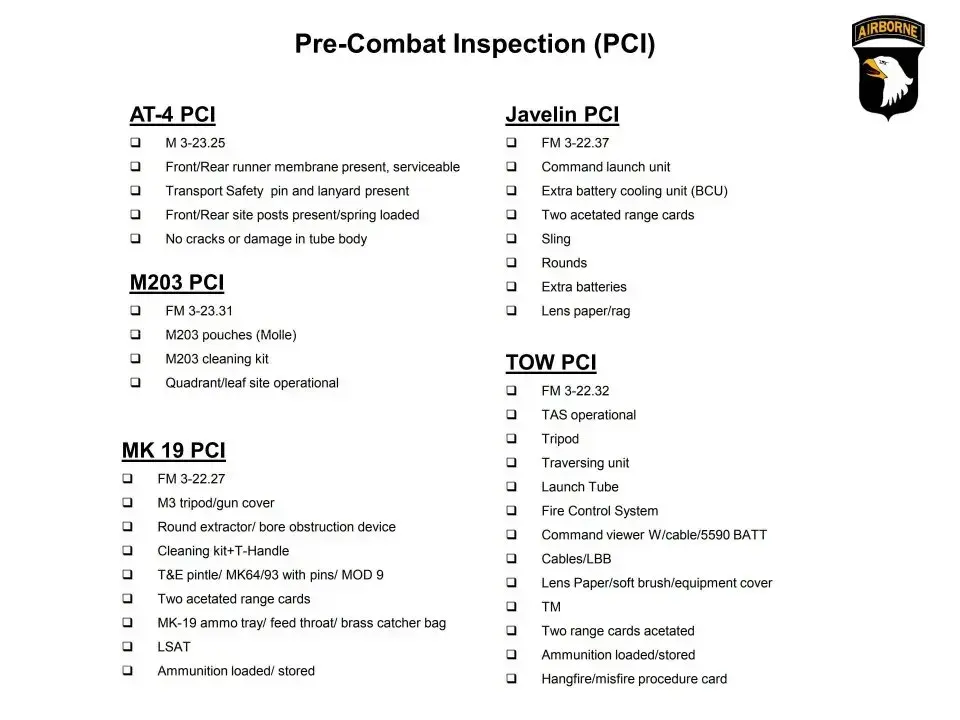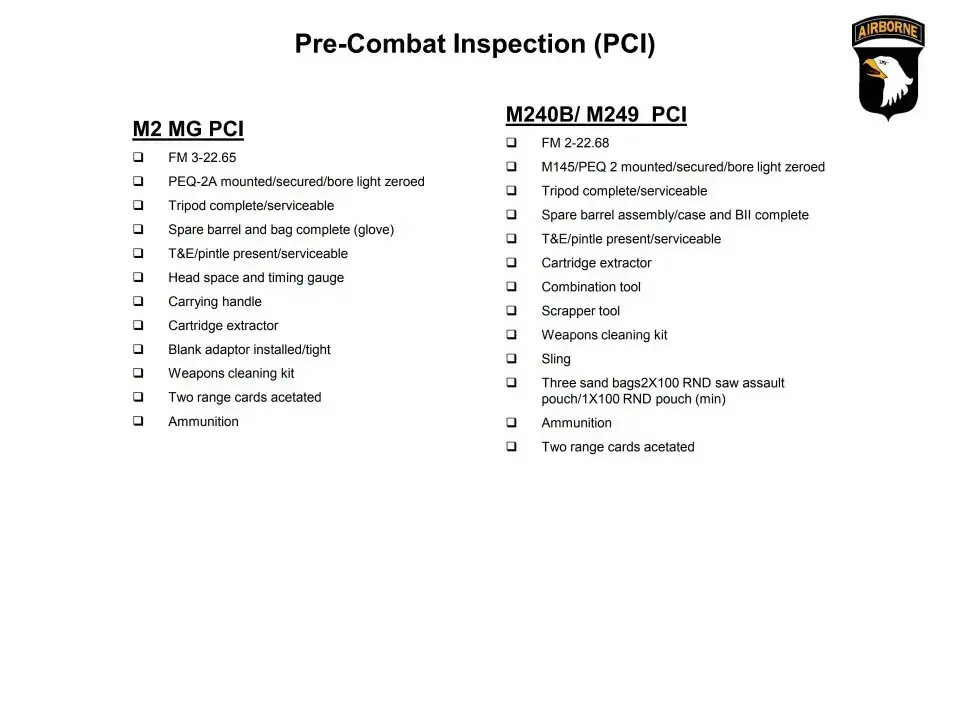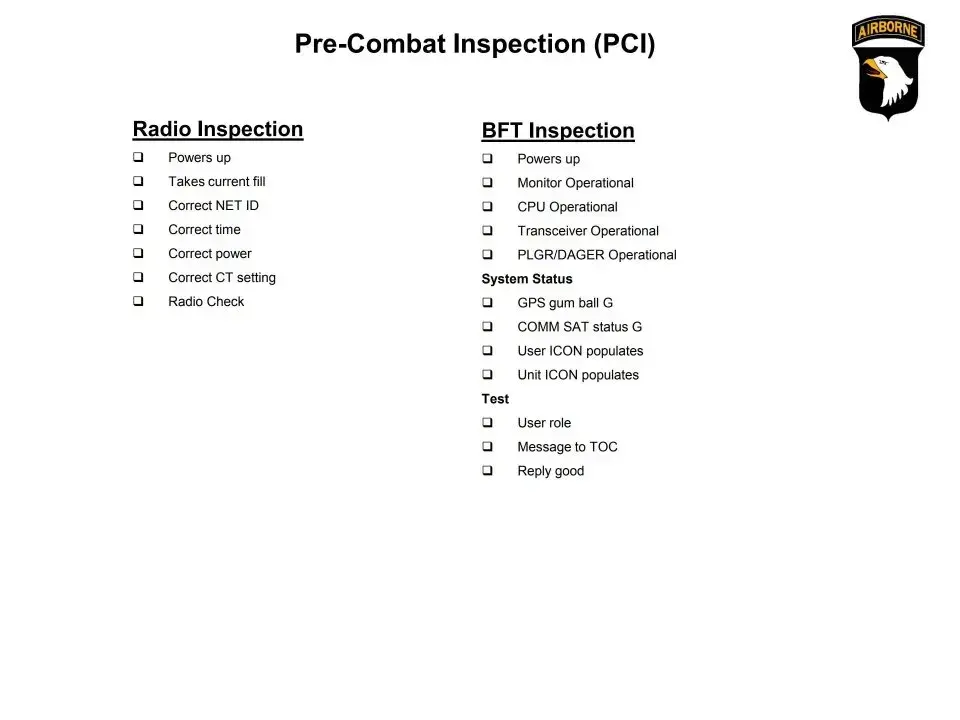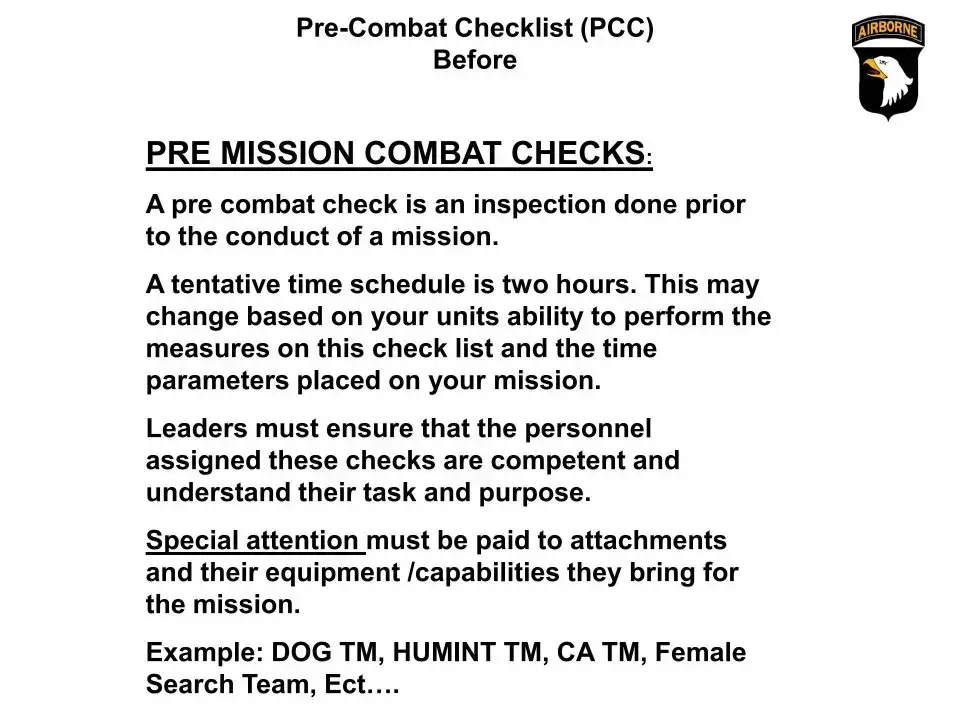What is the PCI Checklist form used for?
The Pre-Combat Inspection (PCI) Checklist is designed to ensure that military personnel are fully equipped and prepared before entering a combat zone. This form outlines the necessary equipment and items that individuals and teams must check and verify to promote safety and mission readiness. It covers personal gear, medical supplies, communication tools, and vehicle preparedness.
Who should complete the PCI Checklist?
The PCI Checklist should be completed by individuals who are preparing for a mission. This includes individual soldiers and team leaders. Each person is responsible for ensuring that their personal gear meets the checklist requirements. Team leaders should oversee the collective checks within their units to ensure full compliance.
How often should the PCI Checklist be used?
The PCI Checklist should be used prior to every mission or deployment. Regular use helps maintain a high level of readiness and ensures that personnel have all necessary equipment. Additionally, it should be reviewed periodically during training exercises to enhance familiarity and efficiency in completing it under stress.
What items are included in the Individual PCI Checklist?
The Individual PCI Checklist includes essential items such as an ACH helmet, ballistic eye protection, ID cards, zeroed and functional weapons, optics, a complete Individual Body Armor (IBA), and an Improved First Aid Kit (IFAK). It also lists additional supplies like extra socks, communication devices, and maps. Each item is crucial for ensuring that personnel are ready for various combat situations.
What should be done if an item on the checklist is missing?
If any item from the PCI Checklist is missing, it should be reported immediately to the appropriate team leader or supply sergeant. Teams should not proceed with the mission until all required items are accounted for and available. Using the checklist as a tool helps prevent equipment shortages that could jeopardize safety and mission success.
